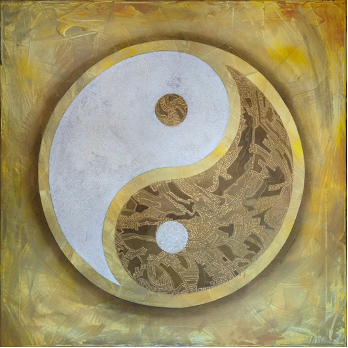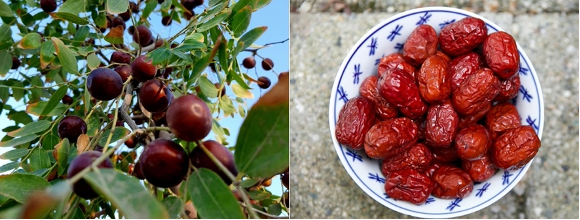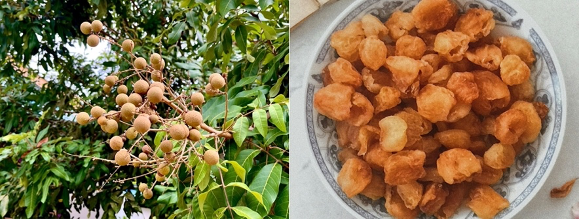FOR THIS WEEKEND ONLY, I will be making my newsletter FREE for anyone subscribing.
You will get FULL ACCESS to ALL future paid posts free of charge.
All current subscribers will be converted to paid subscribers
If you are interested in getting FREE ACCESS to weekly recipes and deep dives, SUBSCRIBE NOW! :)
Welcome back to this week’s issue of Whisked Away! As always, thank you so much for taking the time to read this. Without further ado, let’s get into it!
One of my favourite restaurants in Singapore is Godmama, a modern Peranakan restaurant serving both authentic Nyonya fare and innovative Peranakan food creations. Yes, their food is great but what impressed me was one specific item from their dessert menu. Their rendition of the simple but elegant Sticky Toffee Pudding, Sticky Red Date Pudding. This wonderfully moist red date pudding served with a longan tea glaze, a huge scoop of vanilla bean ice cream and garnished with cooked red dates and longan was absolutely divine! The dish, obviously inspired by the Chinese Red Date and Longan Tea was nothing short of genius.
I don’t know about you but I am someone recreating delicious food I try at restaurants. So after trying their Sticky Red Date Pudding, I knew it was something I wanted to try making at home and maybe even creating something that tastes even better!
If you didn’t know, Chinese Red Date and Longan Tea is a sweet and delicious drink made by simmering dried Chinese red dates (also known as jujubes) and dried Longan fruit in water. Additional ingredients such as ginger or goji berries (also known as wolfberries) can also be added. It can be served both hot or cold and has many health benefits.
According to Traditional Chinese Medicine (TCM) theory, everything in nature is made up of a balance of yin (dark) and yang (bright) energy. When there is an excess of yang energy, the body becomes ‘heaty’ whereas when there is an excess of yin energy, the body becomes ‘cooling’.
External factors such as the food that we eat can manifest as ‘heatiness’/’coldness’ in our bodies. For example, eating an excess of fried foods can cause an individual to develop ‘heaty’ symptoms with their thermally warm or hot properties which increase the internal heat and energy of the body. On the other hand, eating ‘cooling’ foods which possess thermally cool or cold properties can help to reduce excess internal heat or yang energy.
If a person has too much yang (heaty) energy, some symptoms such as sore throat, acne and mouth ulcers may surface. If an individual has too much yin (cooling) energy, symptoms such as cold hands and feet, lethargy and pale face may surface.
In TCM, the goal is to achieve a balance between both yin and yang energies. When one is ‘heaty’, ‘cooling’ foods are recommended to counteract the ‘heatiness’. Conversely, if one has too much ‘cooling’ energy in their body, ‘heaty’ foods are recommended to counteract the ‘cooling’ energy. In our case, both red dates (jujubes) and longans are considered ‘heaty’ foods which nourish the blood, improve sleep, reduce stress and calm the mind.
Jujube
Jujube (Ziziphus jujuba), also known as red date and Chinese red date is a plant native to China. The fruit has been eaten and used in traditional medicine for over 4,000 years. Despite its name, the jujube fruit is not a date but rather a member of the buckthorn family. They grow on small, thorny deciduous trees or shrubs which can reach a height of 5 – 12 meters and are typically grown in warm, dry climates such as South Asia. They can typically be found fresh when in season and dried all year round.
Fresh jujubes are crisp and sweet with a texture similar to apples albeit much smaller. They taste different depending on which stage of ripeness you eat them at. The green/ yellow ones are mildly sweet and a little tart while the red ones are sweeter. They can be used in salads, served with meats or eaten on their own.
Dried red jujubes are much sweeter than their fully ripe fresh counterpart. They have a chewy and spongey texture to them and have a more intense flavour not dissimilar to syrup. They taste a little bit caramelly but not to the extent of dates such as Medjool or Honey dates. They are usually used in desserts, soups, teas or as a snack on their own.
Jujubes provide a myriad of health benefits such as helping to prevent blood clots, strengthening the immune system, improving sleep quality, relieving stress and improving skin complexion.
Longan
Dimocarpus Longan, commonly known as longan fruit or dragon’s eye is a white-fleshed fruit native to tropical Asia and China that is closely related to the lychee fruit and rambutan. The grape-sized longan fruit has translucent white flesh and an inedible black seed when its thin, bark-like shell is removed. The flesh itself is sweet and juicy with a delicate flavour often described as floral and musky.
Longans are commonly eaten fresh, either on their own or added to desserts or beverages. Longans can also be found dried or canned in syrup to extend their shelf-life.
They have many health benefits such as strengthening the immune system, improving heart health and supporting cognitive function.
Jujube & Longan Tea Pudding
When I was developing this recipe, I wanted a dessert that was not too sweet while distinctively tasting like the red date and longan tea. My recipe also differs slightly from the version from Godmama as the cake has a red date and longan puree instead of just a red date puree. The syrup also had to taste reminiscent of the red date and longan tea.
When finding dried jujubes, try to find ones that are already pitted for the sake of convenience. Pitting a large bag of hard-to-peel, dried jujubes is not fun at all. However, if you only can find the ones with the pit, weigh out about 10% more dried jujubes than you actually need before soaking them in cold water for at least an hour so that the weight of the pit is accounted for.
When buying dried longans, you may come across ones that are black instead of the typically golden ones. Those can also be used in this recipe. The colour is the result of the sugars in the longan caramelizing during the drying process.
I understand that dried jujubes, longan and goji berries may not be as accessible for you. However, there are no substitutions for them. So, try to find them online or at a local Asian grocer.
Jujube & Longan Tea Glaze
90g Dried Jujubes, pitted and sliced into quarters
45g Dried Longan
23g Goji Berries
30g Rock Sugar or 23g Granulated Sugar
750ml Water
1. Rinse the dried jujubes, longan and goji berries then transfer them into a saucepan to soak with 750ml of cold water for 1 hour.
2. Add the rock sugar and bring to a boil on high heat. When it starts boiling, switch to low heat and simmer for 40-45 minutes, stirring occasionally. Simmer until most of the water is evaporated and the jujubes, longan and goji berries are soft.
3. Strain the syrup into a bowl through a fine-mesh sieve and lightly press on the solids to get more syrup out. Let the syrup cool down. You should get about 150g of syrup. Reserve the cooked jujubes and longan for garnishing.
Cake
Makes six 9cm ramekins
150g Dried Jujubes, pitted and sliced into quarters
30g Dried Longan
200ml Water
3g Baking Soda
160g All-Purpose Flour
10g Baking Powder
2g Salt
90g Butter, softened and more for greasing
130g Caster Sugar
110g Eggs, about 2 eggs
2g Vanilla Extract
1. In a saucepan, combine the dried jujubes, longan, baking soda, and 200ml of water. Place the mixture on the stove and bring it to a simmer. Stir occasionally, and be careful not to leave it unattended as the baking soda will cause it to bubble over. Let it simmer for 3-4 minutes or until almost all of the water has evaporated.
2. Transfer the mixture to a food processor/blender and blend till smooth. Some larger pieces of jujube skin left is fine. Pass the mixture through a fine-mesh sieve to remove the jujube skin. Let the jujube/longan mixture cool.
3. Preheat oven to 180C and grease the ramekins with butter.
4. Sift the flour and baking powder into a medium bowl then mix in the salt. Set aside.
5. In a stand mixer fitted with a paddle attachment, add the softened butter, sugar and vanilla extract. Cream on medium speed until the butter has doubled in volume and turned a pale white, about 3 minutes. Scrape down the sides of the bowl.
6. While the stand mixer is on medium speed, add the eggs one at a time until well combined. Beat the mixer until airy, about 3 minutes.
7. Reduce the mixer speed to low. Add half of the dry ingredients and beat till just combined. Mix in the cooled jujube/longan mixture then add in the remaining dry ingredients. Mix until just combined.
8. Evenly distribute the batter among the ramekins, filling them up to three-quarters full. Use a spoon or an offset spatula to spread the batter evenly. Place the ramekins on a half-sheet tray.
9. Bake for 25 – 30 minutes until the cakes are golden brown and a cake tester comes out clean. A few moist crumbs are fine. Let cool for 15 minutes before unmoulding onto a wire rack.
Assembly
1. Brush a tablespoon of the jujube & longan tea glaze evenly onto the top of the cake.
2. Serve with a scoop of vanilla ice cream on top of the cake, the reserved jujubes and longan and additional jujube & longan tea glaze on the side



















I guess for your content videos would be a nice add on to see how you're baking this! 😍 Yummy!